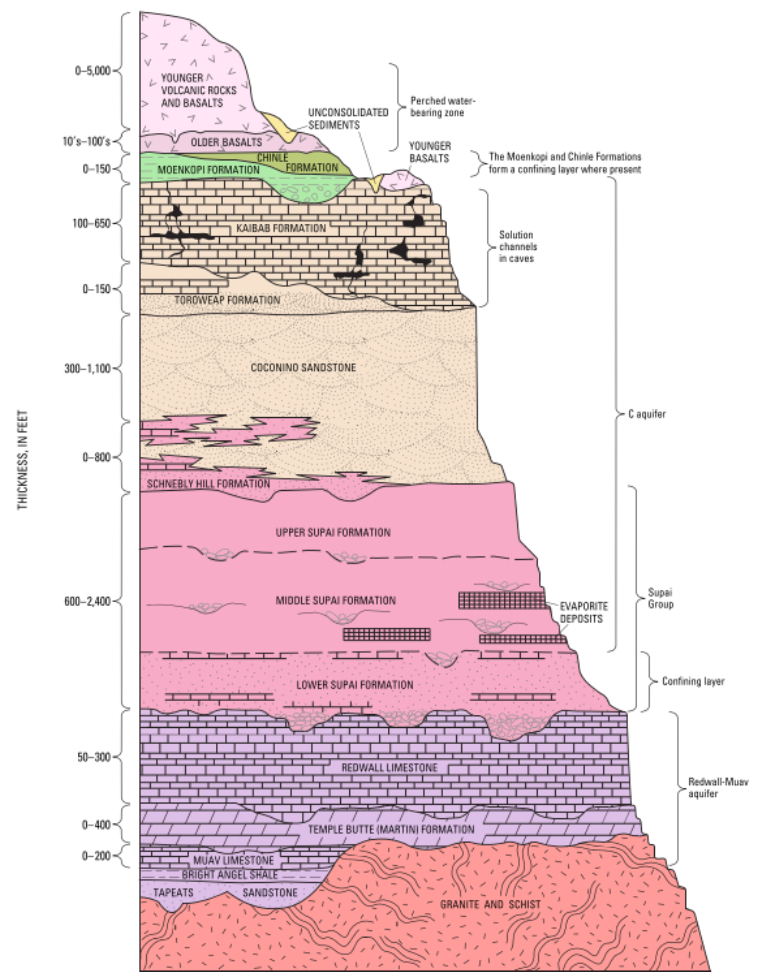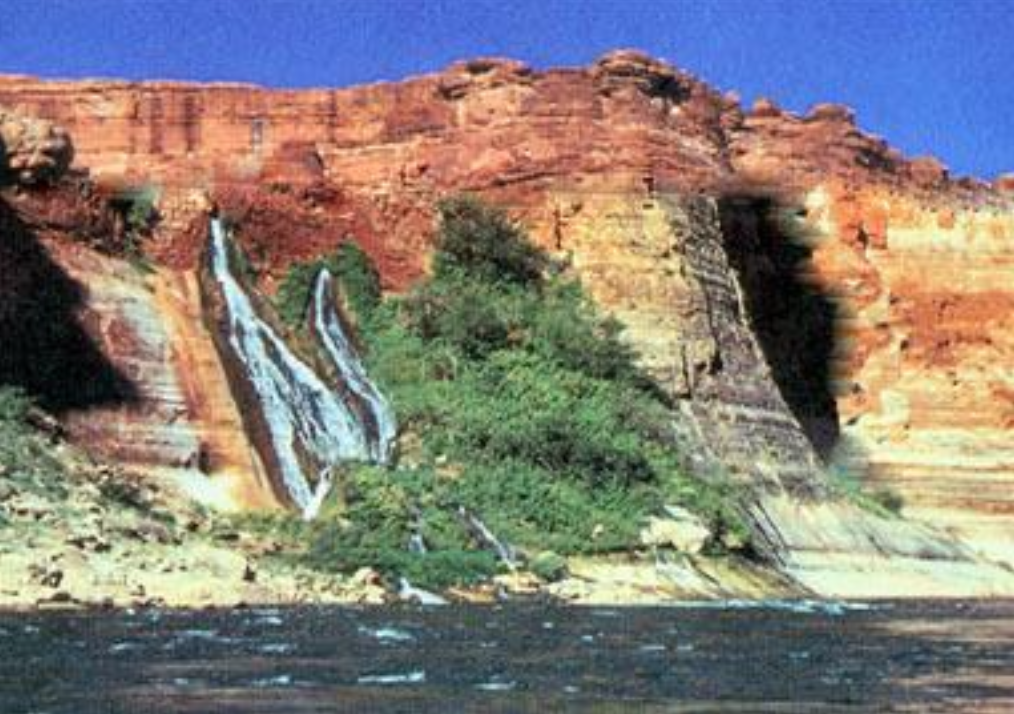Based on Nicole Tanner’s talk titled, “Groundwater Evolution of the Grand Canyon”
With the increasing popularity of the Grand Canyon comes the increase of visitors in the park. This increasing number of visitors sparks images of crowds of tourists, soaking in the glory of the phenomenon of the Grand Canyon. With this lovely image also comes the more grotesque image of the trash left behind, the impact on wildlife, as well as extremely crowded bathrooms and thirsty tourists basking in the hot Arizona sun in the summer. Not only do the tourists need fresh, clean water, but so does the wildlife within the unique habitats supported by the Grand Canyon. But where exactly does this water come from? It comes from the groundwater, or simply water within the ground, or in this case, the breathtaking orange and tan rocks that line the gorge of the Grand Canyon.
But where exactly is this groundwater coming from? Groundwater forms when rain penetrates the surface of the earth and makes it to the water table. The ability of a substance to allow water to pass is called permeability. Sand has a high permeability, meaning that water can easily pass through, while clays will impede water and thus have low permeability. Impermeable layers of rock composed of clay, or aquitards, confine water underground in aquifers. An aquifer is the permeable layer of rock that contains and transports groundwater. Water bound by two aquitards makes a confined aquifer, whereas water just below the surface and above an impermeable layer is an unconfined aquifer. The Grand Canyon has two different aquifers: one that is confined and one that is unconfined. The unconfined aquifer lies within the Coconino Sandstone, whereas the confined aquifer lies in the Red Wall Muav aquifer, bound by two impermeable layers of rock (Figure 1).

The groundwater interacts with the Colorado River in a couple of ways. The water table, or the area underneath the surface where groundwater is located, typically follows the topography, or landscape. However; the Colorado River is extremely incised, and the level of the water table lies above the river. This means that the groundwater comes out of the rocks, forming springs (ie Figure 2). These springs feed the Colorado River, making the river a gaining stream since it is groundwater supported. A stream feeding the groundwater would be a losing stream. These springs are extremely important in supporting riparian habitats along the river, which in turn, support the incredibly precious and endangered wildlife within the Grand Canyon.

Some of the springs producing groundwater around the Grand Canyon are contaminated by unsafe levels of arsenic and uranium. With the groundwater being depleted by local farming and irrigation, the concentrations of elements such as these increase. This increase negatively impacts wildlife, and can kill populations that are sensitive to these changes. This contamination has also caused problems for tourism in the South Rim of the Grand Canyon, since most of the groundwater there is too contaminated to drink. The supply of water for tourism comes from groundwater directly taken from a spring located in the North Rim, which is piped across the Colorado River and up the South Rim. This method is extremely costly, but cheaper than treating the heavily contaminated water in the South Rim. Using natural springs also preserves the landscape, since excessive pumping can cause sinkholes, deplete natural springs, and cause a loss of natural habitat which is crucial for sustaining the wildlife within the canyon.
So with the doomed groundwater situation in the Grand Canyon, what are we to do? Of course, we cannot tell our bodies to stop producing waste, but as visitors, we can bring our own supply of water in jugs to reduce the strain on groundwater. The park can also take steps towards reducing the water usage in regards to bathrooms by using low-flow toilets and industrial water for sinks. Us visitors, or even those who are not actively touring the Grand Canyon, can write letters to the park to encourage the reduction in water use by promoting the usage of water-saving technology and putting in place signs for water awareness by bathrooms and water fountains. With enough voices, we can make a difference and reduce the unsustainable pressure on the groundwater in the Grand Canyon in effort to sustain the already endangered wildlife and reduce our footprint on this natural wonder.
